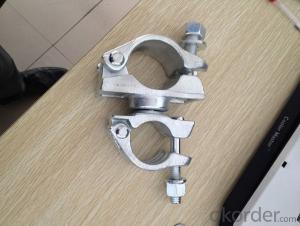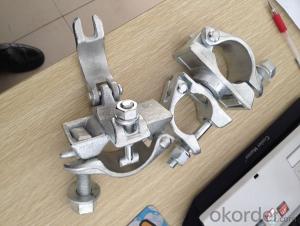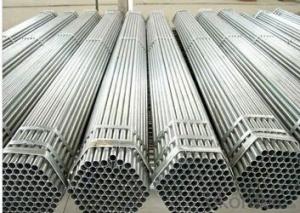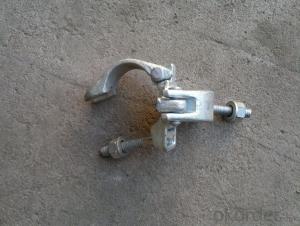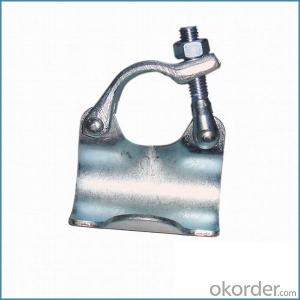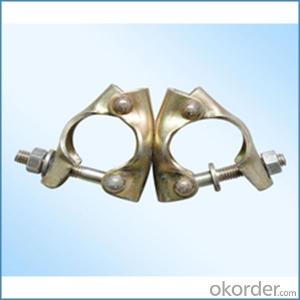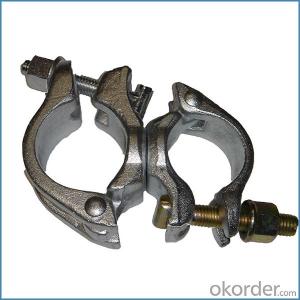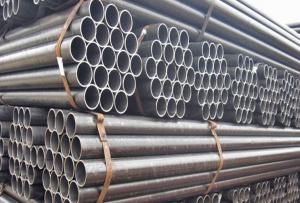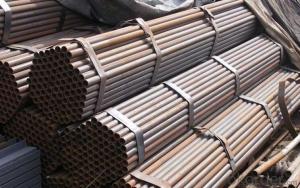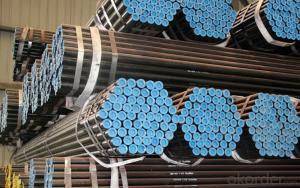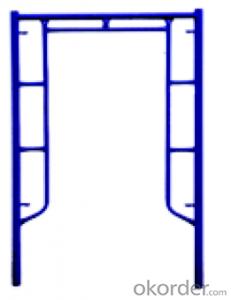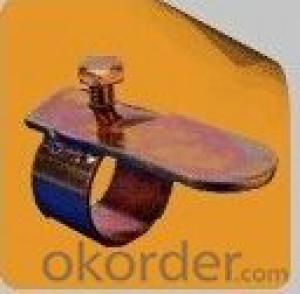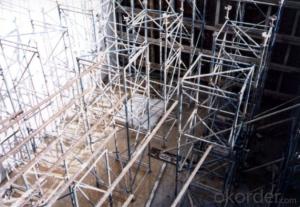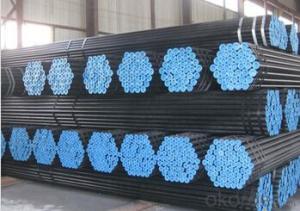scaffolding forged irregualr coupler
- Loading Port:
- Nanjing
- Payment Terms:
- TT OR LC
- Min Order Qty:
- 1000 pc
- Supply Capability:
- 30000 pc/month
OKorder Service Pledge
OKorder Financial Service
You Might Also Like
Drop forged irregualr coupler
1.size:48.3mm×63mm
2.weight:2.3kg
3.Material: Q235/225/345
4.surface :self-color / zinc plate / electro galvanized / HDG or painted
5.Standard: EN74 ,BS1139
6.Anti-rust ,skidproof ,high breaking strength
7.Durable finish, reliability, low maintenance, corrosion resistance, robust construction and high tensile strength
8. OEM serice is available
SPECIFICATIONS:
1 MATERIAL:Q235
2 SWIVEL AND DOULE RIGHT ANGLE COUPLER
3 DROP FORGED AND PRESSED
4 BS1139 AND EN74 STANDARD
5 SIZE:48.3*48.3MM
6 PRESSED AND DROP FORED SWIVEL AND FIXED COUPLER/PUTLOG COUPLER/SLEEVE COUPLER/INNER CONNECTOR/BEAM COUPLER ETC.
Pressed swivel coupler 1.02kg galvanized/ hot dipped galvanized
Pressed fixed coupler 0.85kg galvanized / hot dipped galvanized
DROP FORGED SWIVEL COUPLER 0.98kg galvanized / hot dipped galvanized
DROP FORGED SWIVEL COUPLER 1.12kg
DROP FORGED PUT LOG COUPLER 0.62KG galvanized / hot dipped galvanized
SLEEVE COUPLER 1.0KG galvanized / hot dipped galvanized
DROP FORGED FIXED BEAM COUPLER 1.45KG galvanized / hot dipped galvanized
DROP FORGED SWIVEL GRINDER COUPLER 1.5KG galvanized / hot dipped galvanized
7 SUITABLE FOR PIPE DIAMETER:48MM,48.3MM,60.3MM
8 Payment terms:30%TT deposit, balance against BL copy or LC at sight
9 FOB .CIF.C&F ,CFR acceptable
10 Delivery time;20-30days after receiving deposit
- Q:Can steel tube couplers be used with both steel and aluminum scaffolding tubes?
- Yes, steel tube couplers can be used with both steel and aluminum scaffolding tubes. Steel tube couplers are designed to connect and secure scaffolding tubes of various materials, including steel and aluminum. These couplers are typically made from high-quality steel and are designed to provide a strong and secure connection between the tubes. It is important to ensure that the couplers are compatible with the specific size and dimensions of the scaffolding tubes being used to ensure a proper fit and a safe working environment.
- Q:Are steel tube couplers compatible with both steel and aluminum scaffolding?
- Steel tube couplers can be used with steel scaffolding but not with aluminum scaffolding. These couplers are specifically created to connect steel tubes and offer a dependable and steady connection. The size and threading of these couplers are made to fit steel tubes precisely. Conversely, aluminum scaffolding has different dimensions and threading. This implies that steel tube couplers cannot provide a suitable fit or a secure connection when utilized with aluminum scaffolding. As a result, it is essential to employ the appropriate couplers that are specifically designed for aluminum scaffolding to guarantee safety and stability.
- Q:While standing on a long board resting on a scaffold, a 60 kg painter paints the side of a house. If the mass of the board is 13 kg, how close to the end can the painter stand without tipping the board over?
- It very much depends on how and where (at which points along its length) the board is supported by the scaffold.
- Q:Are there any specific guidelines for using steel tube couplers in scaffolding systems that need to accommodate different ground elevations?
- Scaffolding systems that need to accommodate different ground elevations require specific guidelines for using steel tube couplers. Stability and safety are important when working with scaffolding systems on uneven ground. Here are some guidelines to consider: 1. Ground condition assessment: Before setting up the scaffolding, assess the ground conditions to determine the level of unevenness. This will help you choose the appropriate couplers and components that can accommodate the different ground elevations. 2. Utilize adjustable base plates: Adjustable base plates are commonly used in scaffolding systems to level the structure on uneven ground. These plates can be adjusted to compensate for different ground elevations, providing a stable and secure platform. 3. Ensure proper alignment and bracing: When setting up scaffolding on uneven ground, it is crucial to achieve proper alignment and bracing. This will help distribute the load evenly and prevent any leaning or tilting of the structure. Use couplers and connectors to securely fasten the scaffolding components together, ensuring stability and rigidity. 4. Regular inspection and maintenance: Regularly inspect the scaffolding system to identify any signs of wear, damage, or instability. Immediately replace any damaged or worn-out couplers to maintain the integrity and safety of the structure. 5. Comply with local regulations and industry standards: Always adhere to local regulations and industry standards when using scaffolding systems. These regulations may have specific requirements or guidelines for scaffolding on uneven ground, including the use of steel tube couplers. By following these guidelines, scaffolding systems can be effectively and safely used to accommodate different ground elevations. Prioritizing safety and stability is essential when working on uneven terrain to prevent accidents and maintain a secure working environment.
- Q:How do you ensure proper alignment and stability when using steel tube couplers in scaffolding?
- To achieve proper alignment and stability while using steel tube couplers in scaffolding, it is essential to follow several important steps: 1. Conduct a quality inspection: Before utilizing steel tube couplers, it is critical to thoroughly inspect them for any signs of damage or defects. Look for cracks, deformations, or corrosion that may compromise their strength and stability. Only employ couplers that are in excellent working condition. 2. Make the appropriate selection: Choose the suitable type and size of steel tube couplers for the specific scaffolding application. Consider factors such as load requirements, tube diameter, and scaffold design. The utilization of incorrect couplers can result in misalignment and instability. 3. Ensure proper tightening: When connecting the tubes with couplers, ensure they are securely tightened using the appropriate tools, such as scaffold spanners or ratchets. Tighten the couplers to the torque value recommended by the manufacturer. Loose or improperly tightened couplers can cause misalignment and compromise scaffolding stability. 4. Regularly inspect alignment: Regularly inspect the alignment of the tubes and couplers to confirm proper alignment. Misalignment can occur due to settling, vibrations, or incorrect usage. Use a straight edge or laser level to check alignment, and if any misalignment is detected, make the necessary adjustments and re-tighten the couplers. 5. Implement stability measures: Besides proper alignment, stability is crucial for safe scaffolding. Ensure that the scaffolding base is stable and level, and if necessary, properly anchor or tie it to the structure. Use diagonal braces to enhance stability and prevent lateral movement. Routinely inspect the scaffolding's stability during use and make any necessary adjustments or reinforcements to ensure stability. 6. Comply with regulations: Always adhere to local and national regulations and guidelines for scaffolding installation and usage. These regulations often include specific requirements for the type and use of steel tube couplers. Following these regulations helps ensure proper alignment and stability, as well as the overall safety of the scaffolding system. By following these steps, it is possible to achieve proper alignment and stability when using steel tube couplers in scaffolding, thereby reducing the risk of accidents and ensuring a safe working environment for individuals utilizing the scaffolding.
- Q:What are the common industry certifications or approvals for steel tube couplers in scaffolding?
- There are several common industry certifications and approvals for steel tube couplers used in scaffolding. These certifications ensure that the couplers meet certain quality and safety standards. Some of the most widely recognized certifications and approvals include: 1. EN 74: This is a European standard that specifies the requirements for couplers used in tube and coupler scaffolding systems. EN 74 certification ensures that the couplers meet specific strength, durability, and dimensional requirements. 2. BS 1139: This is a British standard that sets out the specifications for scaffolding couplers, including steel tube couplers. Couplers that comply with BS 1139 are deemed to be safe and suitable for use in scaffolding applications. 3. ANSI/SSFI SC100-5/05: This is an American National Standard for Testing and Performance of Scaffold Couplers. It provides guidelines for the testing and performance of scaffold couplers, including steel tube couplers. Couplers that meet the requirements of ANSI/SSFI SC100-5/05 are considered to be of high quality and reliable. 4. ISO 9001: This is an internationally recognized standard for quality management systems. ISO 9001 certification demonstrates that the manufacturer has implemented effective quality control processes, ensuring consistent production of steel tube couplers that meet customer requirements. 5. OSHA compliance: While not a certification per se, complying with the regulations set by the Occupational Safety and Health Administration (OSHA) in the United States is crucial for ensuring the safety of scaffolding systems. Scaffolding couplers used in the US market should adhere to OSHA's requirements to minimize the risk of accidents and injuries. It's important to note that the specific certifications and approvals required may vary depending on the country or region. Therefore, it is always recommended to consult local regulations and standards to ensure compliance with the appropriate certifications and approvals for steel tube couplers used in scaffolding.
- Q:Can steel tube couplers be used for scaffolding on uneven surfaces?
- Steel tube couplers can be used for scaffolding on uneven surfaces, but certain precautions need to be taken. When working on uneven terrain, it is important to ensure that the scaffolding is properly leveled and stabilized. Adjustable base plates or screw jacks can be used to achieve a level base for the scaffolding. Additionally, it is crucial to check and recheck the stability of the scaffolding, especially on uneven surfaces, to prevent any accidents or collapses. The couplers themselves can still be used effectively on uneven surfaces as long as the scaffolding structure is properly supported and secured.
- Q:How do you inspect steel tube couplers for any damages or defects?
- To ensure the structural integrity and functionality of steel tube couplers, a systematic approach must be taken to inspect them for damages or defects. The following steps outline a thorough inspection process: 1. Begin by visually examining the couplers for any visible damages or defects. Look for cracks, dents, deformations, or corrosion on the surface, paying particular attention to areas around welds and connections. 2. Measure the dimensions of the coupler using suitable tools like calipers or micrometers. Compare these measurements with the manufacturer's specifications to ensure they fall within acceptable tolerances. 3. Use non-destructive testing (NDT) methods to detect any hidden defects that may not be visible to the naked eye. Techniques like ultrasonic testing, magnetic particle testing, or dye penetrant testing can identify cracks, internal flaws, or material inconsistencies. 4. Verify the load-carrying capacity of a representative sample of couplers through load testing. Apply a gradually increasing load to the coupler while monitoring for any signs of deformation, cracking, or failure. Ensure this testing is within specified limits according to relevant standards or regulations. 5. Keep detailed records of all inspections, including the date, inspector's name, findings, and any necessary actions taken. This documentation will serve as a reference for future inspections and provide an audit trail if needed. 6. Implement a routine maintenance plan to periodically inspect steel tube couplers. This includes regular cleaning, lubrication, and re-inspection to identify any damages or defects that may have occurred during usage. It is crucial to adhere to industry standards, manufacturer guidelines, and applicable regulations when inspecting steel tube couplers. If significant damages or defects are detected, consult an expert or the manufacturer for guidance on repair or replacement.
- Q:Are steel tube couplers adjustable for different widths in scaffolding?
- Yes, steel tube couplers are adjustable for different widths in scaffolding. They are designed to accommodate various sizes of steel tubes and can be tightened or loosened to fit the desired width, providing flexibility and adaptability in scaffolding construction.
- Q:Got my scaffolding/industrial piercing done a couple of days ago. I like it but i would prefer it a little more horizontal than at the moment, would it be possible/worth it for me to take the top piercing out and get it re-pierced further down?
- in order to get both piercings lined up for a bar between, you'd need to get both redone, and not just the top one
1. Manufacturer Overview |
|
|---|---|
| Location | |
| Year Established | |
| Annual Output Value | |
| Main Markets | |
| Company Certifications | |
2. Manufacturer Certificates |
|
|---|---|
| a) Certification Name | |
| Range | |
| Reference | |
| Validity Period | |
3. Manufacturer Capability |
|
|---|---|
| a)Trade Capacity | |
| Nearest Port | |
| Export Percentage | |
| No.of Employees in Trade Department | |
| Language Spoken: | |
| b)Factory Information | |
| Factory Size: | |
| No. of Production Lines | |
| Contract Manufacturing | |
| Product Price Range | |
Send your message to us
scaffolding forged irregualr coupler
- Loading Port:
- Nanjing
- Payment Terms:
- TT OR LC
- Min Order Qty:
- 1000 pc
- Supply Capability:
- 30000 pc/month
OKorder Service Pledge
OKorder Financial Service
Similar products
New products
Hot products
